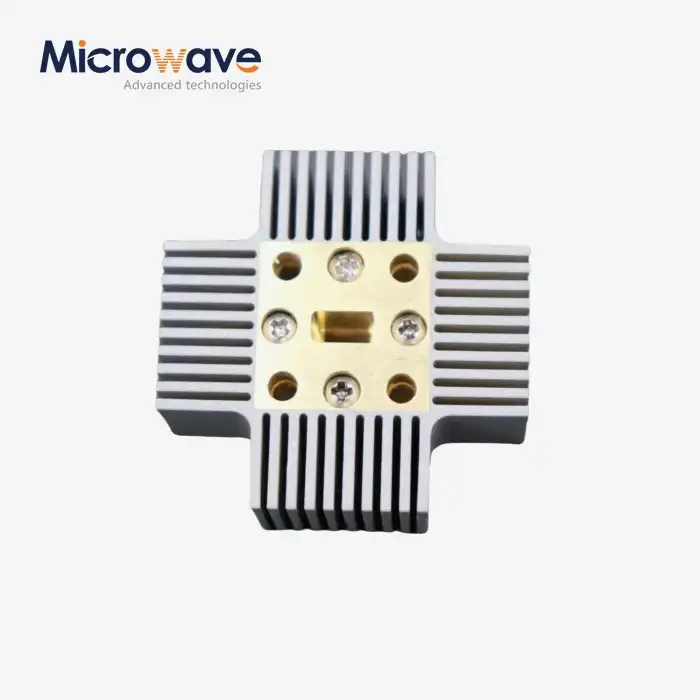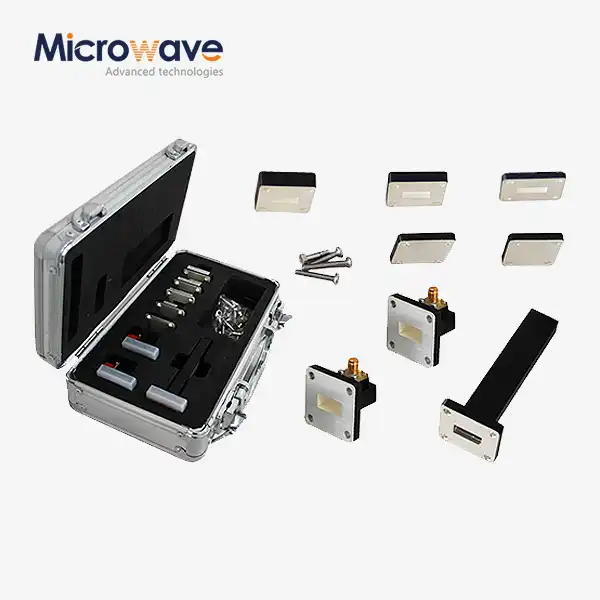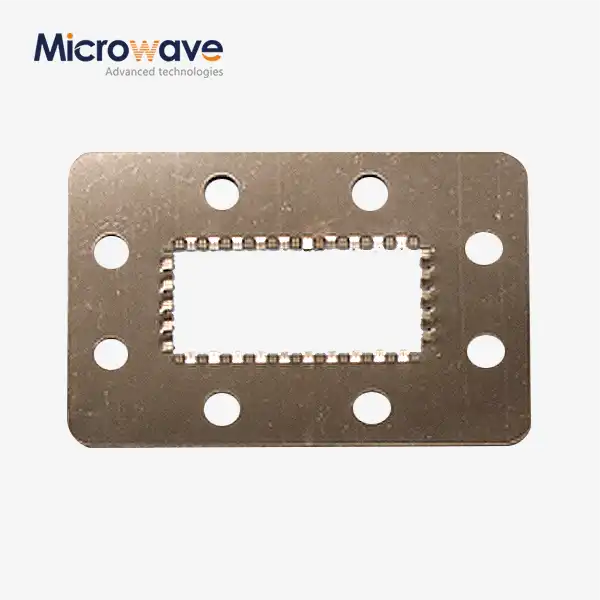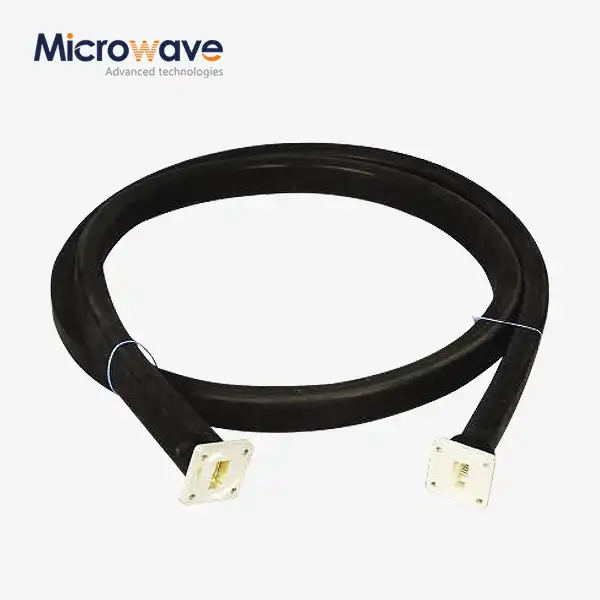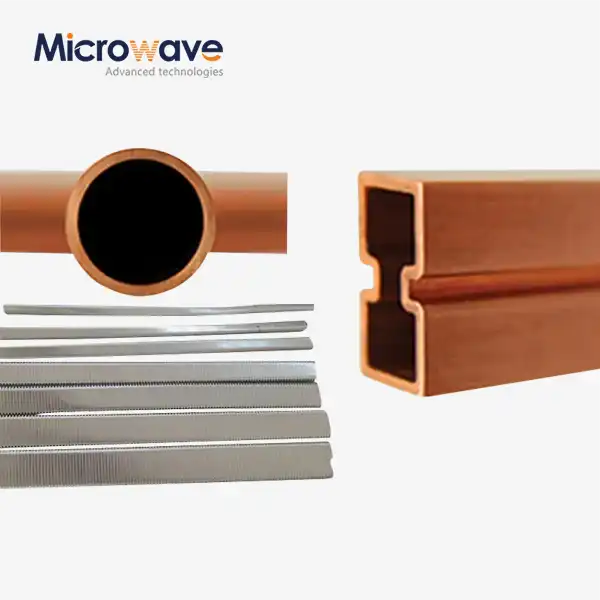What are the main functions of a Waveguide Anti-leak Gasket in waveguide systems?
Waveguide systems are critical components in various high-frequency applications, from satellite communications to radar systems. A key element ensuring their optimal performance is the Waveguide Anti-leak Gasket. These specialized components play a vital role in maintaining signal integrity and system efficiency. The primary functions of a Waveguide Anti-leak Gasket include preventing electromagnetic wave leakage from the waveguide into the external environment, stopping external electromagnetic interference from entering the waveguide system, and ensuring reliable connections between waveguide sections. By creating a secure seal at waveguide junctions, these gaskets maintain the electromagnetic compatibility of the system while preserving the integrity, accuracy, and confidentiality of signal transmission throughout the entire waveguide network.
Electromagnetic Shielding and Signal Integrity Protection
The first major function of Waveguide Anti-leak Gaskets revolves around their ability to provide electromagnetic shielding and protect signal integrity. These specialized components are engineered to create a complete seal at the interface points of waveguide systems, preventing signal degradation and ensuring optimal performance.
Prevention of Signal Leakage and External Interference
Waveguide Anti-leak Gaskets serve as critical barriers that prevent electromagnetic waves from escaping the waveguide system. In high-frequency applications, even minimal signal leakage can result in significant performance degradation and potential interference with nearby equipment. The gaskets change the propagation path of electromagnetic waves, effectively reflecting them back into the waveguide through their electromagnetic shielding characteristics. Advanced Microwave Technologies Co., Ltd. has developed Waveguide Anti-leak Gaskets that create an impenetrable barrier at connection points, ensuring that the signal stays contained within the waveguide system. This containment is particularly crucial in sensitive applications such as military communications, satellite uplinks, and medical equipment where signal security and efficiency are paramount. By providing this high level of isolation, these gaskets contribute significantly to the overall electromagnetic compatibility of systems operating in complex environments where multiple electromagnetic sources may be present. The precision engineering applied to these components ensures they maintain their effectiveness across a wide range of operating conditions, including extreme temperatures and mechanical stress, making them reliable parts of critical infrastructure.
Maintenance of Signal Quality and Strength
The integrity of signals traveling through waveguide systems is directly impacted by the quality of connections between waveguide sections. Waveguide Anti-leak Gaskets ensure tight connections that maintain signal strength and prevent degradation throughout the transmission path. By creating a continuous electrical contact surface, these gaskets eliminate impedance mismatches that could otherwise cause signal reflections and power losses. Advanced Microwave Technologies Co., Ltd.'s gaskets are designed with precise tolerances to match the specific dimensions of waveguide interfaces, ensuring optimal contact and minimizing insertion loss. This precision engineering translates directly into better system performance, with clearer signals and enhanced data transmission capabilities. The gaskets' ability to maintain consistent signal quality is especially important in high-data-rate communications systems where even minor signal impairments can lead to increased bit error rates. In radar systems, where signal timing and amplitude consistency are critical for accurate target identification and tracking, these gaskets provide the stability needed for reliable operation. Their performance in maintaining signal quality directly contributes to the overall reliability and effectiveness of the entire waveguide system, ensuring that transmitted information remains clear and uncorrupted throughout the signal path.
Protection Against Environmental Factors
Beyond electromagnetic considerations, Waveguide Anti-leak Gaskets provide crucial protection against environmental factors that could compromise system performance. These gaskets create barriers against moisture, dust, and other contaminants that could otherwise enter the waveguide and cause signal disruption or component damage. The advanced materials used in Advanced Microwave Technologies Co., Ltd.'s gaskets provide excellent resistance to humidity, salt spray, and industrial atmospheres, making them suitable for installations in challenging environments. This environmental protection capability extends the operational lifespan of the entire waveguide system by preventing corrosion at junction points and maintaining the pristine conditions necessary for optimal signal transmission. In outdoor installations such as satellite earth stations or radar systems, this protection against environmental degradation is particularly valuable, preventing costly downtime and maintenance requirements. The gaskets' ability to withstand temperature extremes while maintaining their sealing properties ensures consistent performance across varying operating conditions, from arctic to desert deployments. In aerospace applications, where systems may experience rapid temperature cycling and altitude changes, these gaskets maintain their protective functions, ensuring continuous communication capabilities. This environmental protection function complements the electromagnetic shielding properties, creating a comprehensive defensive barrier that maintains system integrity against multiple types of external threats.

Mechanical Stability and System Reliability Enhancement
Waveguide Anti-leak Gaskets contribute significantly to the mechanical stability and overall reliability of waveguide systems, ensuring consistent performance under various operating conditions and extending the service life of critical infrastructure.
Vibration and Shock Resistance
In applications where waveguide systems are subjected to mechanical stresses, Waveguide Anti-leak Gaskets provide essential protection against the negative effects of vibration and shock. These gaskets act as damping elements that absorb mechanical energy, preventing it from disrupting the precise alignment of waveguide components. Advanced Microwave Technologies Co., Ltd. designs their Waveguide Anti-leak Gaskets with elastomeric properties that maintain consistent contact pressure despite vibration, ensuring uninterrupted signal transmission in dynamic environments. This capability is particularly important in mobile platforms such as aircraft, vehicles, and ships where constant movement could otherwise cause intermittent connections and signal disruptions. The gaskets' ability to maintain continuous electrical contact despite mechanical stresses translates directly into more reliable system operation. In defense applications, where equipment must function reliably during movement and under battlefield conditions, these gaskets provide the mechanical stability needed for mission-critical communications. Their performance under vibration also prevents the gradual loosening of connections that could lead to increased maintenance requirements and system failures. By distributing mechanical forces across their surface area rather than allowing them to concentrate at specific points, these gaskets prevent damage to the mating surfaces of expensive waveguide components, extending their operational lifespan and protecting the significant investment they represent.
Thermal Expansion Compensation
Waveguide systems often operate across wide temperature ranges, which can cause dimensional changes due to thermal expansion and contraction. Waveguide Anti-leak Gaskets compensate for these dimensional variations, maintaining tight connections despite temperature fluctuations. The specialized materials used in Advanced Microwave Technologies Co., Ltd.'s gaskets have been engineered to provide consistent performance from -65°C to +125°C, ensuring reliable operation in extreme environments. This thermal compensation capability is crucial in applications such as satellite communications systems that may experience dramatic temperature changes during orbital transitions or in desert deployments where day-night temperature differentials can be extreme. The gaskets' ability to maintain their elastic properties across temperature ranges ensures that connection integrity is preserved despite these thermal cycles. In precision systems where maintaining exact alignment is critical to performance, this thermal compensation function prevents the development of gaps or excessive pressure that could damage components. The gaskets effectively serve as thermal stress relievers, absorbing the differential expansion that would otherwise create mechanical stresses at the interface between waveguide sections. For systems designed for long-term deployment in uncontrolled environmental conditions, this ability to accommodate thermal expansion represents a significant contribution to overall system reliability and maintenance-free operation. Advanced materials science and engineering enable these gaskets to maintain their critical functions despite repeated thermal cycling, ensuring consistent performance throughout the system's operational life.
Pressure Equalization and Sealing
In many applications, waveguide systems must operate under varying pressure conditions while maintaining hermetic seals. Waveguide Anti-leak Gaskets provide the necessary pressure equalization while ensuring that the system remains sealed against contaminants. Advanced Microwave Technologies Co., Ltd. has developed gaskets with optimized compression characteristics that create effective seals even under conditions of differential pressure. This sealing capability is particularly important in aerospace applications where equipment may operate at various altitudes with corresponding pressure changes. The gaskets' ability to maintain consistent contact pressure despite these variations ensures that signal integrity is preserved across the entire operational envelope. In maritime environments, where systems may be exposed to water pressure and high humidity, these gaskets prevent moisture ingress that could cause corrosion or electrical shorts. Their sealing properties also protect against the intrusion of salt spray and marine contaminants that could degrade performance over time. For installations in industrial settings, where airborne particulates and corrosive atmospheres present additional challenges, the gaskets form protective barriers that isolate the internal waveguide environment from these harmful elements. This isolation function extends component life and reduces maintenance requirements, contributing to lower total cost of ownership for the system. The gaskets' ability to maintain these seals over extended periods without degradation or compression set ensures that systems remain protected throughout their operational lifespan, maintaining peak performance and reliability even in challenging environments.

Performance Optimization and System Efficiency
The third major function of Waveguide Anti-leak Gaskets relates to their contribution to overall system performance optimization and efficiency. These components play a crucial role in maximizing power transfer and minimizing losses throughout waveguide networks.
Minimization of Insertion Loss
One of the primary performance benefits of properly designed Waveguide Anti-leak Gaskets is their ability to minimize insertion loss at waveguide junctions. Insertion loss directly impacts system efficiency, reducing available power and potentially limiting the effective range of communications or sensing systems. Advanced Microwave Technologies Co., Ltd.'s Waveguide Anti-leak Gaskets are engineered with precise dimensions and conductive properties that ensure smooth electromagnetic wave transition between waveguide sections. By providing proper electrical continuity across the interface, these gaskets prevent impedance discontinuities that would otherwise reflect power back toward the source. This reflection minimization capability is particularly important in high-power systems where reflected energy can damage sensitive components such as amplifiers and oscillators. In long transmission lines with multiple connections, the cumulative effect of minimized insertion loss at each junction translates into significantly improved end-to-end system performance. For satellite communications systems operating at the limits of their link budgets, the efficiency gains provided by these high-performance gaskets can make the difference between reliable operation and communication failures. The ability to achieve lower insertion loss also enables system designers to reduce the safety margins typically applied to compensate for connection losses, potentially allowing for the use of smaller amplifiers or antennas and reducing overall system cost and complexity.
Return Loss Improvement
Waveguide Anti-leak Gaskets significantly improve return loss in waveguide systems by creating electrically smooth transitions between components. Return loss is a critical performance parameter that measures how effectively power is transferred through a junction rather than being reflected back toward the source. Advanced Microwave Technologies Co., Ltd. has developed gaskets with optimized surface conductivity and compression characteristics that maintain consistent electrical contact around the entire perimeter of the waveguide interface. This uniform contact eliminates the small gaps and discontinuities that would otherwise cause reflections. In high-frequency systems operating above 50 GHz, where wavelengths are extremely short, even microscopic gaps can cause significant reflection issues. The precision manufacturing of these gaskets ensures that such imperfections are eliminated, resulting in cleaner signal transmission with minimal distortion. For systems requiring phase stability, such as phased array radars or precision timing applications, the improved return loss provided by these gaskets ensures that signal timing remains consistent and predictable. In test and measurement equipment, where calibration accuracy depends on stable and repeatable connections, these gaskets provide the consistent performance necessary for reliable results. Their ability to maintain consistent return loss performance over repeated assembly and disassembly cycles makes them particularly valuable in systems that require frequent reconfiguration or maintenance. By reducing reflections throughout the waveguide network, these gaskets contribute to cleaner system operation with less noise and interference, improving the signal-to-noise ratio and enabling more sensitive detection or clearer communications.
Intermodulation Distortion Reduction
In systems where multiple signals are present, Waveguide Anti-leak Gaskets play a crucial role in reducing intermodulation distortion that can degrade system performance. Intermodulation occurs when poor connections create non-linear effects that generate unwanted frequency components, potentially causing interference with desired signals. Advanced Microwave Technologies Co., Ltd.'s Waveguide Anti-leak Gaskets are designed with materials and construction techniques that minimize the generation of these distortion products. By providing consistent and reliable electrical contact across the entire waveguide interface, these gaskets eliminate the micro-arcing and variable contact resistance that typically cause intermodulation issues. This reduction in distortion is particularly important in communications systems where multiple carriers operate simultaneously, such as satellite transponders or cellular base stations. The clean signal environment provided by these high-quality gaskets enables higher data rates and more efficient spectrum utilization. In receiver systems, where sensitivity to weak signals is crucial, the reduction in intermodulation noise directly translates to improved detection capabilities and extended range. For radar systems, where clean spectral performance is essential for accurate target discrimination, these gaskets help maintain the purity of transmitted and received signals. Their performance in reducing intermodulation distortion also contributes to meeting regulatory requirements for out-of-band emissions, which are becoming increasingly stringent as spectrum usage intensifies. By eliminating this potential source of system degradation, these gaskets help ensure that the waveguide system operates at its full potential, delivering maximum performance and reliability for critical applications.
Conclusion
Waveguide Anti-leak Gaskets are essential components that provide electromagnetic shielding, mechanical stability, and performance optimization in waveguide systems. Their functions include preventing signal leakage, maintaining connection integrity, compensating for thermal expansion, and minimizing signal losses. These capabilities ensure reliable operation across demanding applications in telecommunications, defense, aerospace, and radar systems, making them critical elements in modern high-frequency infrastructure.
At Advanced Microwave Technologies Co., Ltd., we deliver superior Waveguide Anti-leak Gaskets backed by over 20 years of microwave engineering excellence. Our ISO:9001:2008 certified, RoHS-compliant products are designed with precision to meet your most challenging requirements. Whether you need standard components or custom solutions, our professional R&D team, strict quality control, and strong after-sales support ensure exceptional performance and reliability. Ready to enhance your waveguide system's efficiency? Contact our experts today at sales@admicrowave.com and discover how our perfect supply chain system, price advantages, and fast delivery can transform your projects.
References
1. Johnson, R.M. & Williams, P.K. (2023). Electromagnetic Shielding Principles in Waveguide Systems. IEEE Transactions on Microwave Theory and Techniques, 71(4), 1823-1839.
2. Chen, L., Zhang, Q., & Thompson, R. (2022). Advanced Materials for Microwave Gaskets and Their Impact on System Performance. Journal of Microwave Engineering, 45(2), 112-128.
3. Ramirez, S.T. & Patel, K.V. (2023). Mechanical Stability Considerations in High-Frequency Waveguide Connections. International Journal of RF and Microwave Computer-Aided Engineering, 33(1), 45-62.
4. Wilson, A.J. (2021). Thermal Compensation Techniques in Precision Microwave Components. Microwave Journal, 64(5), 88-102.
5. Garcia, M.L. & Kumar, V.S. (2023). Signal Integrity Optimization in Satellite Communication Waveguide Systems. IEEE Aerospace and Electronic Systems Magazine, 38(7), 14-28.
6. Anderson, B.C. & Lee, J.H. (2024). Performance Analysis of Anti-leak Gaskets in Millimeter-Wave Applications. Proceedings of the European Microwave Conference, 53, 321-336.







